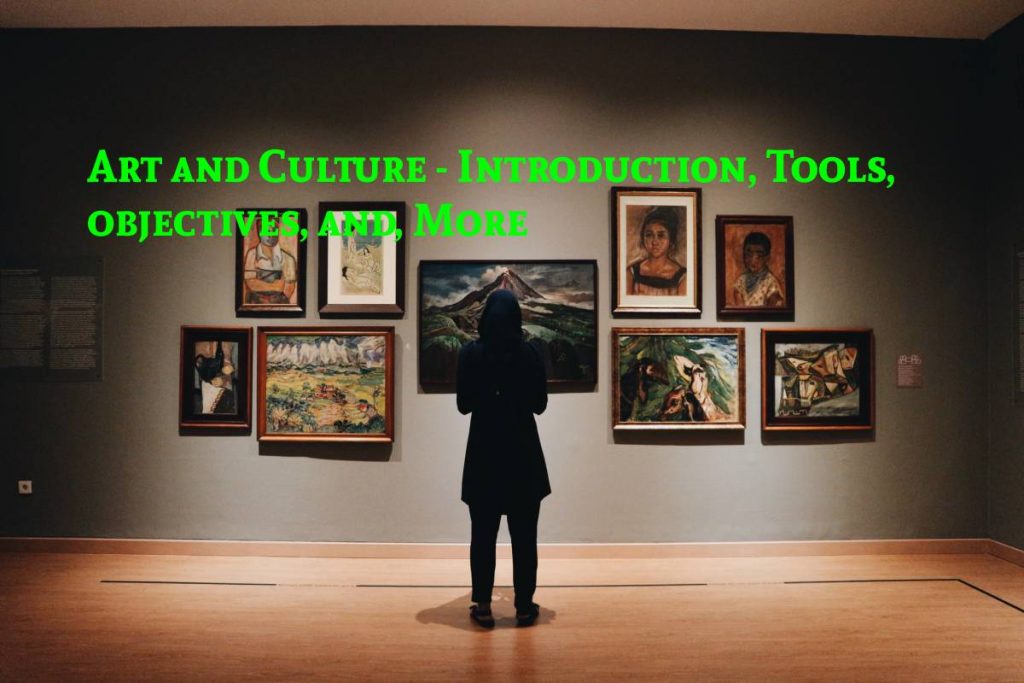Table of Contents
Art and Culture – Introduction
Art and culture – Writing well about art and architecture requires general language skills and specific knowledge of the issues at hand. And mastery of the genres of these disciplines. This volume is a book of style and an introduction to the genres of art criticism and history. Whenever faced with questions related to the art of writing, it provides valuable answers. It guides the future writer on how to tackle the paper of different types of articles, write a doctoral thesis, or what an art critic, an exhibition catalog. However an art guide, or a documentary are very essential for students and professionals who want to learn more about the procedures and resources to create quality texts.
Art and Culture – Tools
Materials are the tools with which we can draw, paint or sculpt. Therefore, the technique is understood as the sum of procedures and processes constructed by the work of art. However these procedures are different in each of the artistic languages.
The Artistic Tools
Eight essential tools for Painting.
- Perhaps this is the essential tool an artist needs to create his paintings. …
- The pencil complement
- Sketch book.
- Brushes.
- A palette for Painting.
- Painting canvas (Canvas)
- Painting.
- Easel for Painting.
Through an introductory approach to the basic methods of journalistic criticism of arts and entertainment. This workshop offers tools to stimulate non-academic writing about the arts for specialized and non-specialized audiences. In addition, these tools can be used to perfect the production of one’s discourse on the skills and promote reflection through creative activity in environments such as educational institutions or community culture.
The workshop has brief theoretical demonstrations designed to guide writing practices. In addition, it offers a guiding bibliography. Whenever ,the general public is interested in the arts and writing. Therefore, each assistant will work with the discipline(s) they wish visual arts, music, dance, theater, cinema, literature, television, etc. It is not a requirement to have previous knowledge or publications.
Art and Culture – Objectives
First as the Academic Committee (the year 2000) and later as the Permanent Commission (CP) of Artistic and Cultural Production (PAC) (the year 2011), it assumed “an open model of Cultural Policy that conceives culture as a permanent creation of the entire community and not from an elite, trying to break with the idea that there is a legitimized culture» (Letter of intent, Montevideo, Uruguay, May 2009).
As a public space, the university is where all cultural expressions can manifest themselves, overcoming territorial borders and between different academic knowledge, rights to culture, rights to equality, and freedom of expression. Liberate artistic expressions from a perpetuation of orthodox ideas and dependence on the logic of the market.
Contributions to regional academic development: Teacher and student mobility have enabled the circulation of new knowledge and experiences widely accepted in all universities. This generated the need to create a specific mobility program for culture. In addition, other integration tools such as the Guarani Language chair, the Winter School, or the International Forum of Popular and Latin American Music were possible thanks to the continuous exchange of experiences, but fundamentally to the generation of spaces for meeting and debate.
Main Activity
Main activities: After its creation and after the economic and financial crisis suffered in Argentina that had repercussions in Uruguay. The Academic Committee of Artistic and Cultural Production (later Permanent Commission) resume its activities in 2004 without interruption to date. Among them is the Letter of Intent written in May 2009, the participation of students and teachers through workshops and urban interventions in three editions of the Biennial of Young Art of the National University of the at the Winter Festival of the Federal University of Minas at the Festival, as well as in countless film shows and seminars. On the other hand, urban interventions within the framework of 100 stand out.
Anniversary of environmental sanitation of the city of Montevideo (storm drains) participation in the II Meeting of Cities and Universities through presentations and a round table, activities within the framework of congresses and meetings such as the exhibition of plastic artists of the National University
Contributions to the resolution of problems in the region:
One of the most significant drawbacks in the development of activities is the circulation of cultural goods across borders. For this reason, the Commission has investigated and prepared instructions to facilitate the passage of works through customs. On the other hand, the contribution of the different cultural experiences that are part of the Urban Observatory of Transfers of Technological-Social Innovations has been of significant contribution as documents of permanent consultation and universal access for the member universities
Academic Development
Values are a fundamental feature of the cultural and university atmosphere. Equality, solidarity, humility, freedom, work, and organization are highlighting principles. The culture is reflecting in each daily activity, not merely in a specific action. Culture and higher education as the Social Heritage of Humanity and not merchandise. Dynamic cultural policies, adaptable to our societies’ new expressions and needs (permanent change).Culture at the service of the construction of the Great Homeland.
Survey of the culture area of the member universities .Development of a diploma or postgraduate degree in Cultural Management through the AUGM. Acquire or perfect the essential tools of journalistic writing on arts and entertainment as a technique for producing non-academic texts. Reflect on many aspects (motivations, challenges, and consequences) of producing a written discourse on the arts.
Conclusion
Art and culture, the artistic activities are those carried out by the human being to communicate through aesthetics. Leaving aside the criteria of minimal expression that other forms of communication such as language have architecture, theater, narrative, and digital art. However, the potential of art facilitates other forms of integration and encourages new programs. In the dialogue towards new ways of social participation, it is necessary to start from culture to understand oneself and the environment.
